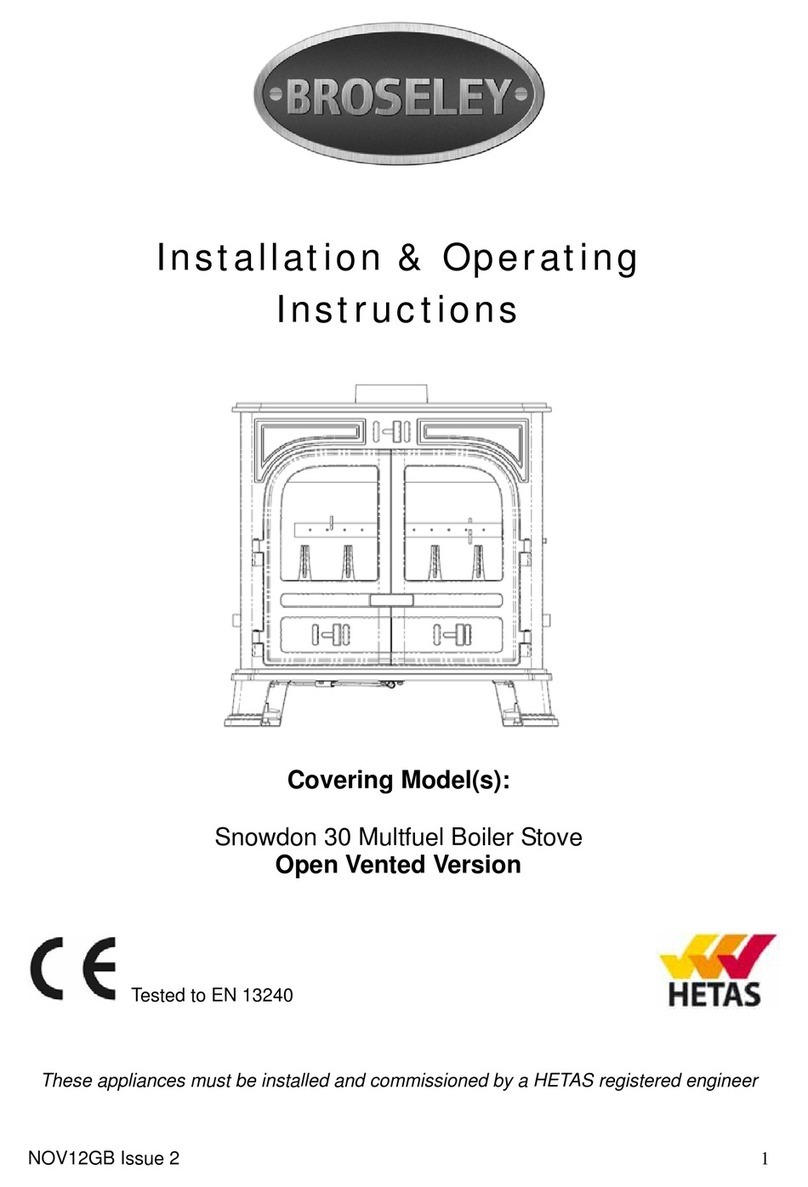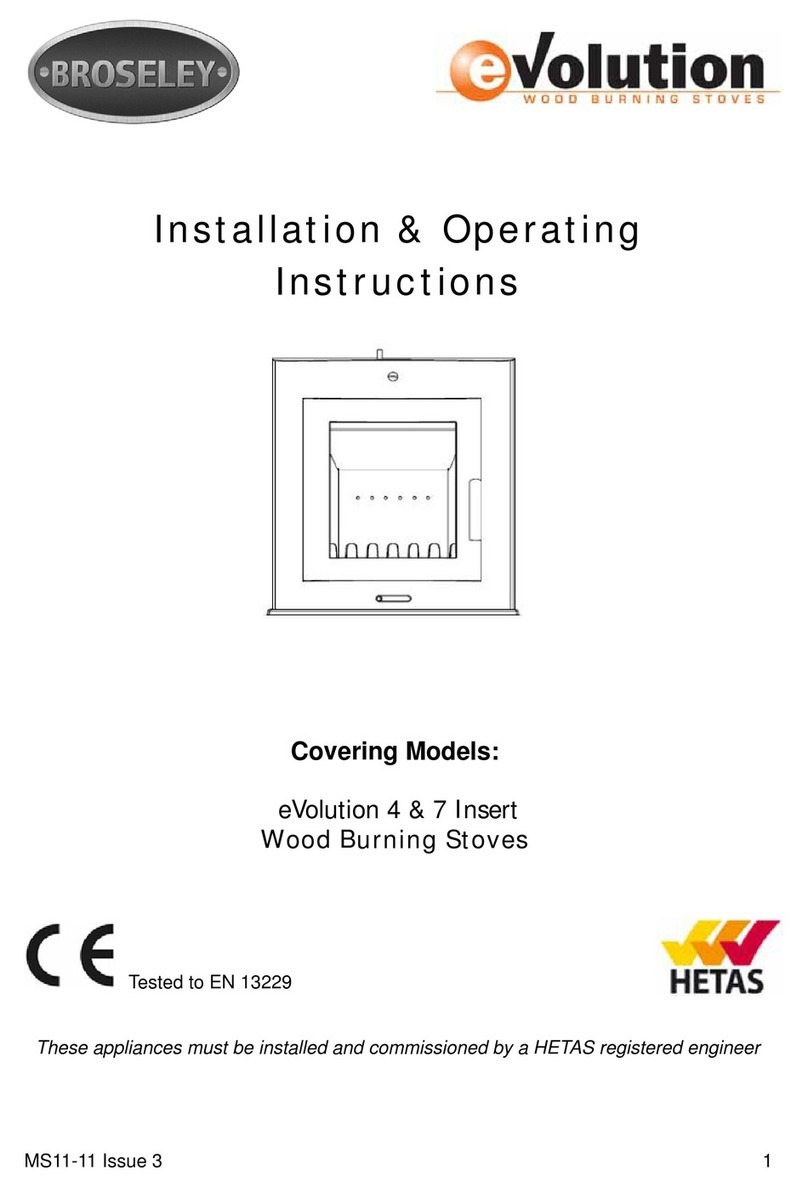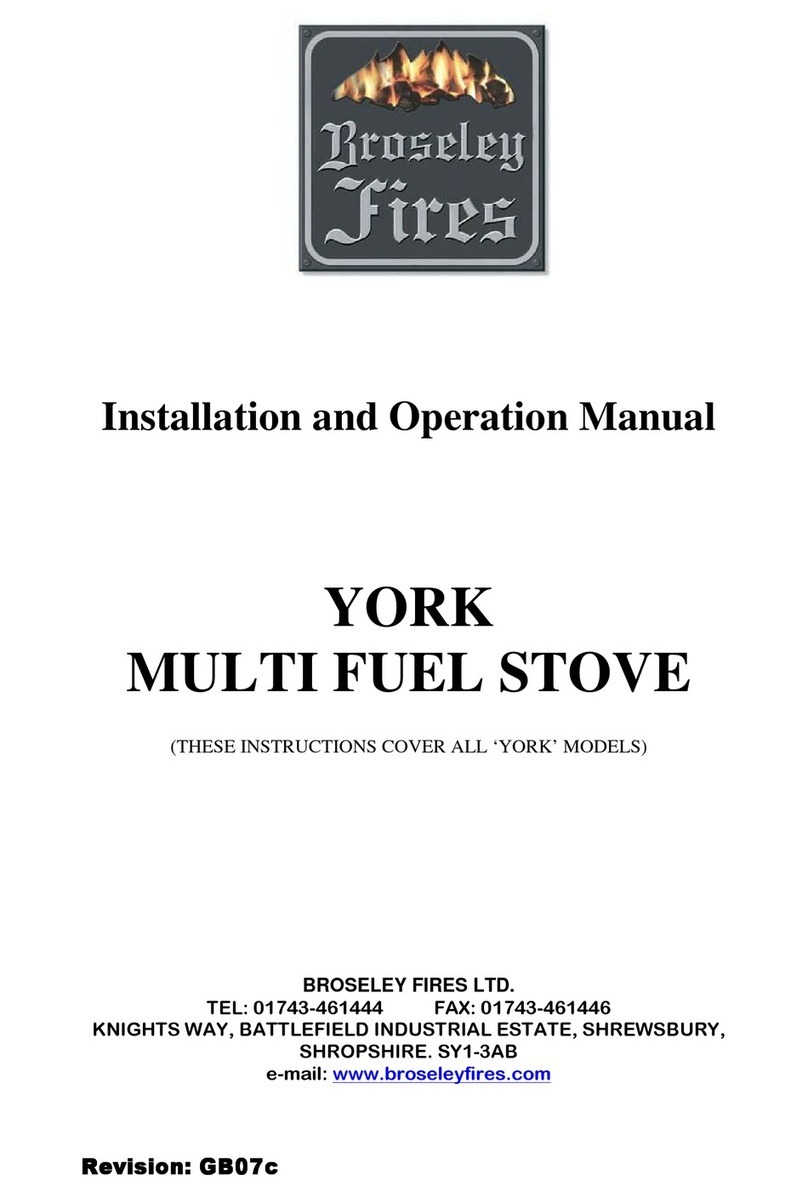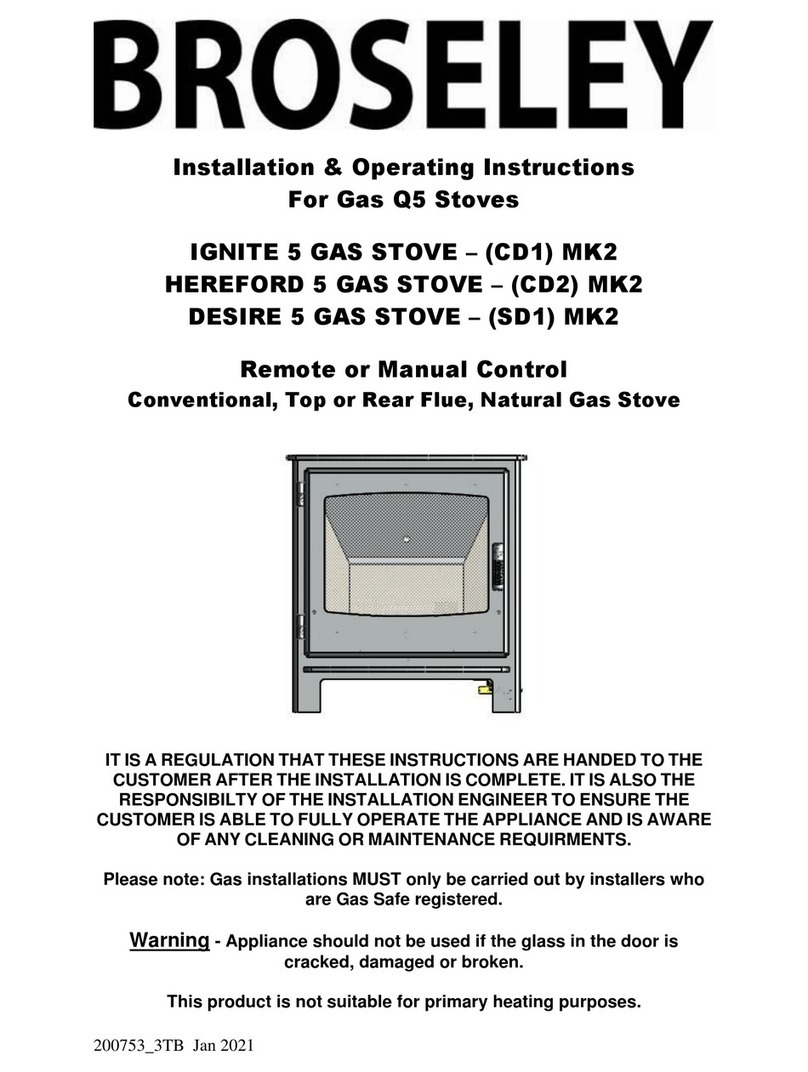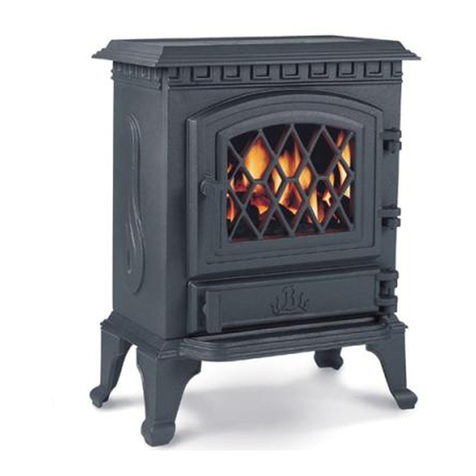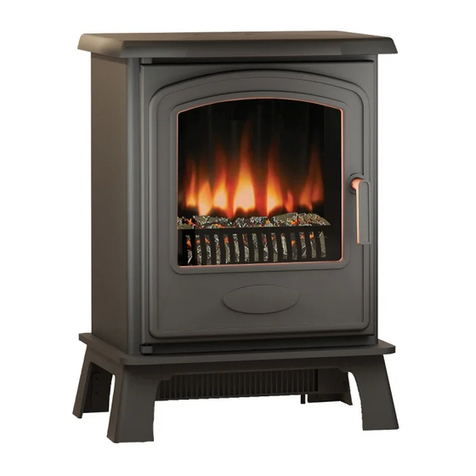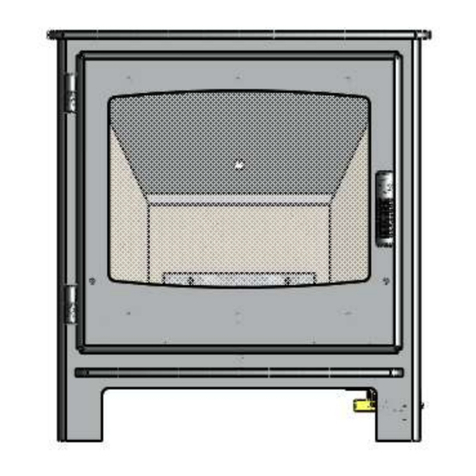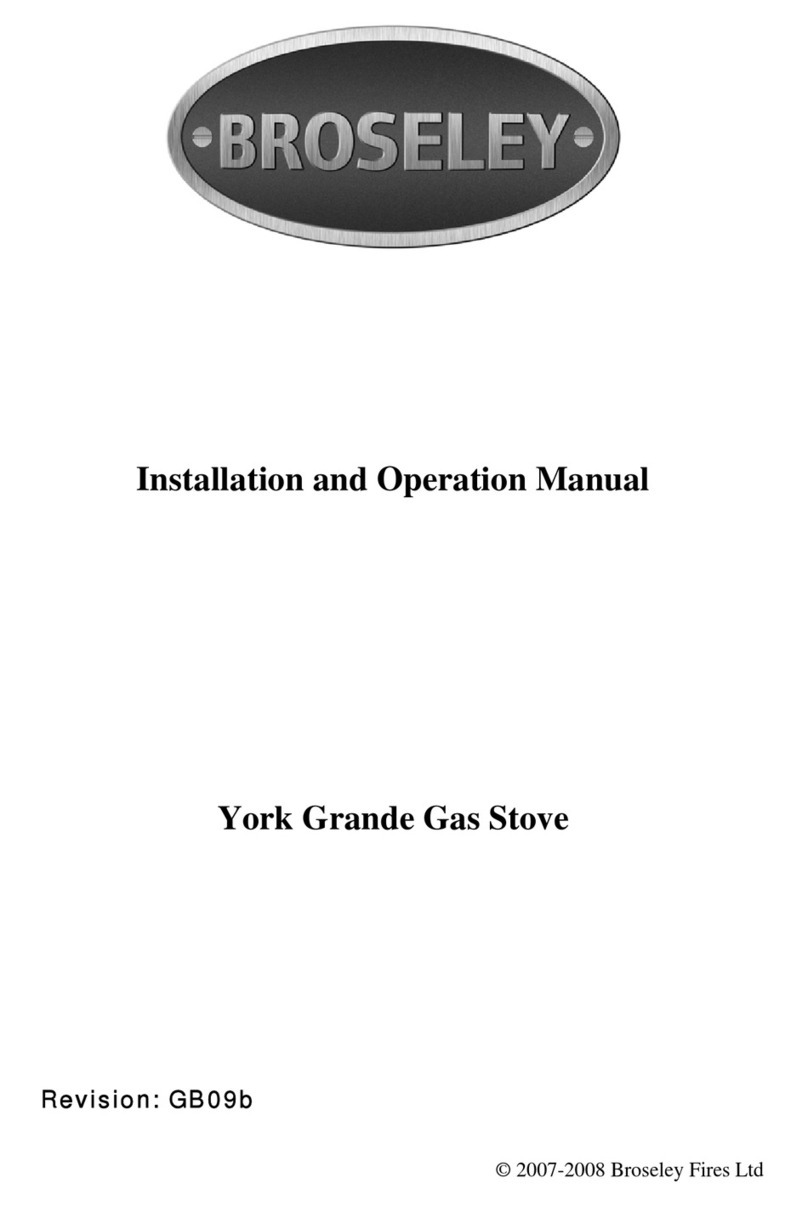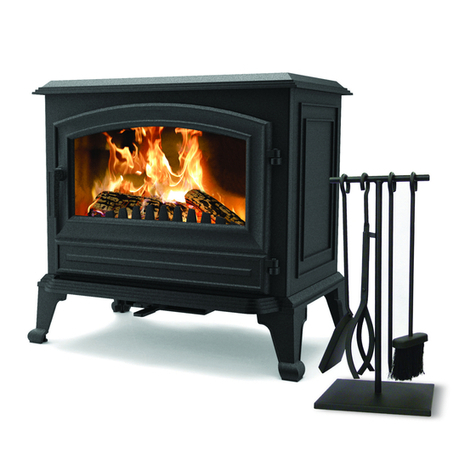
TECHNICAL INFORMATION
NATURAL GAS PROPANE
G20/I2H G31/I3P
Heat Input (Gross) 6.2 Kw/Hr 6.0 Kw/Hr
Supply Pressure 20 Mbar 37 Mbar
Gas Rate 0.59 M
3
/Hr 0.23 M
3
/Hr
Injector Size C.A.T. 28/420 C.A.T. 16/160
CONTENTS
ARRANGING THE LAYOUT OF THE COALS
. . . . . . . . . . . . . . . . . . . . . . . . . . . . . . . . . . . . . . . . . . . . . . . . . . . . . . . . . . . .
8
DIMENSIONS & DETAILS
. . . . . . . . . . . . . . . . . . . . . . . . . . . . . . . . . . . . . . . . . . . . . . ………….. . . . . . . . . . . . . . . . . . . . . . . . . . . . . . . .
2
EXTINGUISHING THE STOVE BACK TO PERMANENT PILOT SETTING
. . .. . . . . . . . . . . . . . . . . . ...
9
EXTINGUISHING THE STOVE FULLY
. . . . . . . . . . . . . . . . . . . . . . . . . . . . . . . . . . . . . . . . . . . . . . . . . . ….. . . . . . . . . . . . . . . ...
9
FLUE CONNECTION
. . . . . . . . . . . . . . . . . . . . . . . . . . . . . . . . . . . . . . . . . . . . . . . . . . . . . . . . . . . . . . . . . . . . . . . . . . . …………... . . . . . . . .
6
GAS CONNECTION
. . . . . . . . . . . . . . . . . . . . . . . . . . . . . . . . . . . . . . . . . . . . . . . . . . . . . . . . . . . . . . . . . . . . . . . . . . . . . . . . . . . ……………. .
7
GUARANTEE
. . . . . . . . . . . . . . . . . . . . . . . . . . . . . . . . . . . . . . . . . . . . . . . . . . . . . . . . . . . . . . . . . . . . . ..
OUTSIDE BACK COVER
IGNITING THE PERMANENT PILOT LIGHT
. . . . . . . . . . . . . . . . . . . . . . . . . . . . . . . . . . . . . . . . . . . . . . . . . . . . . . . . . . . . . .
9
IMPORTANT INFORMATION
. . . . . . . . . . . . . . . . . . . . . . . . . . . . . . . . . . . . . . . . . . . . . . . . ………. . . . . . . . . . . . . . . . . . . . . . . . . . . .
3
NOTE TO THE INSTALLATION ENGINEER
. . . . . . . . . . . . . . . . . . . . . . . . . . . . . . . . . . .. . . . . . . . . . . . . . . . . . . . . . . . . . .
10
OPERATING THE STOVE
. . . . . . . . . . . . . . . . . . . . . . . . . . . . . . . . . . . . . . . . . . . . . . . . . . . . . . . . . . ……….. . . . . . . . . . . . . . . . . . . . . .
9
PRESSURE TESTING
. . . . . . . . . . . . . . . . . . . . . . . . . . . . . . . . . . . . . . . . . . . . . . . . . . . . . . . . . . . . . . . . . . . . . …………... . . . . . . . . . . . . .
7
RUNNING THE STOVE AT A HIGHER OUTPUT
. . . . . . . . . . . . . . . . . . . . . . . . . . . . . . . . . . . . . . . . . . .. . . . . . . . . . . . . .
9
RUNNING THE STOVE AT LOW SETTING
. . . . . . . . . . . . . . . . . . . . . . . . . . . . . . . . . . . . . . . . . . . . . . . . . .. . . . . . . . . . . . . .
9
SERVICING INSTRUCTIONS
. . . . . . . . . . . . . . . . . . . . . . . . . . . . . . . . . . . . . . . . . . . . . . . . . . . . . . . . . . . . . . . . . . . . ……….. . . . . . .
13
SITING THE APPLIANCE
. . . . . . . . . . . . . . . . . . . . . . . . . . . . . . . . . . . . . . . . . . . . . . . . . . . . . . . . . . . . . . . . . . . . . . . . . . . . . …………. . .
4
SPILLAGE MONITORING SYSTEM
. . . . . . . . . . . . . . . . . . . . . . . . . . . . . . . . . . . . . . . . . . . . . . . . . . . . . . . . . . . . . . . . . . …….. .
11
STOVE ASSEMBLY
. . . . . . . . . . . . . . . . . . . . . . . . . . . . . . . . . . . . . . . . . . . . . . . . . . . . . . . . . . . . . . . . . . . . . . . . . . . . . …………….. . . . . . . .
5
TEST FOR SPILLAGE
. . . . . . . . . . . . . . . . . . . . . . . . . . . . . . . . . . . . . . . . . . . . . . . . . . . . . . . . . . . . . . . . . . . . . . . . . . . . . …………… . . . .
10
TROUBLESHOOTING
. . . . . . . . . . . . . . . . . . . . . . . . . . . . . . . . . . . . . . . . . . . . . . . . . . . . . . . . . . . . . . . . . . . . . . . . . . . . . . . …………… . .
12
VENTILATION
. . . . . . . . . . . . . . . . . . . . . . . . . . . . . . . . . . . . . . . . . . . . . . . . . . . . . . . . . . . . . . . . . . . . . . . . . . . . . . . . . . . . . . . ……………….... . .
6
Broseley Fires Ltd.
Knights Way, Battlefield Enterprise Park, Shrewsbury, Shropshire SY1 3AB
Tel: 01743 461444 Fax: 01743 461446



